Fiction
Nonfiction
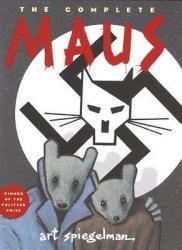
Maus is a two-part graphic survival story of World War II in Auschwitz. It is a true story of Art Spiegelman's father, who was a Polish Jew and was put into Auschwitz, one of the biggest concentration camps in Nazi Germany.
The comic book style is an amazing way to learn history, as it enforces themes through images and tells a story rather than spitting facts, like some history books do. The author portrays different nationalities as different animals, which stands as an ongoing theme in the book: The Jews are the mice and the Nazis are the cats. This makes for an easy relation between the two (cats hunt mice). I am not a huge fan of learning history for the sake of learning history, but I adored this book. I found it intriguing on a very personal level, but also extremely informative. I strongly recommend Maus.
Reviewer Grade: 11
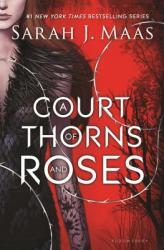
This book intrigued me immensely. The main character, Feyre, has believed that the faeries are evil for her whole life. However, when she becomes a faerie's prisoner, she sees their ways in a new light.
I liked the storyline of this book a lot. It is sort of an enhanced version of Beauty and the Beast with a few twists. Maas is a great writer, and she uses intricate details to keep the book interesting.
However, I did not care for the characters very much. Some of them seemed cliché, and none were three-dimensional enough for me to relate to or care about.
I do recommend this book to anyone who likes young adult fantasy because it has a compelling plot, and I have heard that the subsequent books in the trilogy are much better.
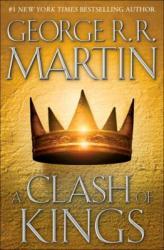
A Clash of Kings is the second book in Martin's A Song of Ice and Fire. After adoring the first book, I was not at all disappointed with the second. The immensely complex fantasy world only continues to grow and develop in this book, as do the characters. George R. R. Martin perfectly juggles all the different storylines, making them all interesting, suspenseful, and fascinating. His characters are so 3-dimensional that characters the reader hates in the first book begin to be shown in a new light. I very strongly recommend this book to anyone that read A Game of Thrones. Every paragraph in this book is so richly embellished and detailed that as I read these books, I felt like I was learning the history of another country.
Reviewer Grade: 11
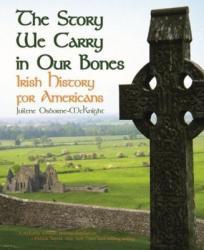
I checked out "The Story We Carry in Our Bones: Irish History for Americans"
to do research on Irish culture for my novel. It was an extremely informative book that describes what life was like for ancient Irish people and I'd highly recommend it if you would like to learn more about this fascinating culture.
Grade: 11
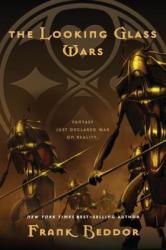
"The Looking Glass Wars" by Frank Beddor is a vivid, imaginative, retelling of the Alice in Wonderland story with interesting characters and a complex setting. This book was really fun, but I felt that some of the plot twists were a little predictable and the villain was a little stereotypical. But, it is definitely worth a read if you want a fun fairytale adventure.
Grade: 11
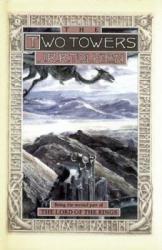
The second installment in J.R.R. Tolkien's "Lord of the Rings" trilogy, "The Two Towers," takes up the challenge of doubling up on the success of Tolkien's previous novel. This is a daunting task, as fans clamored to the brilliant and wonderfully crafted masterpiece of "The Fellowship of the Ring". Though after having read and thoroughly reflected upon Tolkien's most recent work, I am pleased to say that he was able to exceed my expectations.
The novel begins directly where the last left off, with Frodo Baggins having been taken hostage by a group of vicious orcs. In spite of this setback, he is still on a quest to destroy the mystical ring, but as is to be expected in such a story, his journey is neither simple nor straight-forward.
Along the way, Frodo makes encounters with a number of new characters, ever-diversifying this creative and beautifully crafted story. Their journey stands witness to a number of conflicts, wars, and battles, with various different social groups across the realm taking part. Through it all, as Frodo inches closer to his destination, the faded shadow of Mordor- where the Dark Kingdom and Sauron await- gleams in his foresight.
I originally picked up this novel immediately after the last, and am glad to have read it. Some may not enjoy the novel quite as much, due to the fact that the language is very particular and can sometimes present readers with a bit of a learning-curve. However, the story manages to continue to enhance the rich narrative setup in the previous novel, and does a wonderful job with transitioning the story forward. Tolkien’s colorful and imaginative lore’s, histories, and descriptions truly make this novel a must read!
Reviewer’s Grade Level: 10
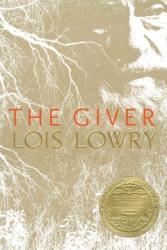
The Giver, written by Lois Lowry, was about a boy named Jonas who is about to turn twelve. Jonas lives in a community where everything is the same and fair, because with any differences it can cause arguments. Because everything is the same, everyone gets bicycles at the same age, gets their job at the Ceremony of Twelve, and is only allowed to have one boy and one girl child in their "family unit". When the Ceremony of Twelve arrives, Jonas has no idea what job he is going to get, but lots of kids his age do. When the day finally comes, he gets told that he has the rarest and highest of honor job there is- he gets to see memories from a long time ago in history. The person training him, or as Jonas calls him, the Giver, gives him memories of a long long time ago when things were way more strange. Everything in his community is the same- that means no colors, animals, and everyone is treated the same.
The Giver shows him some very important memories, and Jonas sets out on a quest to show everyone these memories that he has. I really enjoyed this book, and it was not predictable. A thing that I enjoyed about the book is that it shows how Jonas started to change and act different, for the better, when the Giver gave him more memories.
Reviewer grade: 8
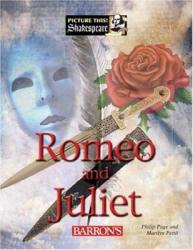
As is likely the case with many readers, I was assigned to study the play "Romeo and Juliet" in a high school English class. While it's true that I was led on to read the book out of obligation, I ended up forming some pretty spirited opinions on the novel. I definitely was not engaged in this read, but even still, am able to respect its excellence in the context of Shakespeare's time.
As a reader, you can tell that the language used is vastly different from that of the common, English vernacular. For this reason, it can sometimes be a challenge to understand what is going on in the plot, especially since the story is told through the lens of a play. Before attempting this read, I would certainly brush up on some basic play terms, to grasp a better understanding of the composition of such a work.
Another factor contributing to the difficulty of this read is Shakespeare’s use of Iambic Pentameter, a rhyming scheme ideal for sonnets where three sets of rhyming quatrains and two lines of rhyming couplets are alternated. I found it truly impressive that Shakespeare manages to devise these rhymes with so much detail and insight. To go through with reading this novel, I would have to suggest to understand the rhyming scene of Iambic Pentameter, as doing so allows you to come to terms with a greater appreciation for Shakespeare’s work.
I found the plot itself to be a bit too inconstant. While at first the novel seems somewhat believable, the ending turns totally wild and unpredictable. I don’t mean to critique Shakespeare’s work, as his play was truly revolutionary for its time, but to a 21st century teen, this novel may not be the most enjoyable.
In terms of the themes, the novel excels with powerful and proactive lessons.
Reflecting on the plot, and Shakespeare’s use of literary devices such as foreshadowing, can lead to meaningful conversations and analyses about life, love, and happiness.
Overall, I would pin my recommendation on this book, but only if you take the time to understand the niche delicacies of Shakespeare’s writing. At face value, the novel may not seem the most exciting or engaging to the reader, but by appreciating the literary masterpiece found in Shakespeare’s work, you’ll definitely enjoy the read!
Reviewer’s Grade Level: 10
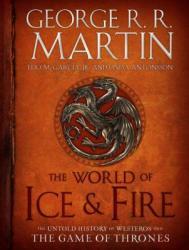
George R.R. Martin's "A Song of Ice and Fire" trilogy took the book-industry by storm, selling millions of copies and reinventing the fantasy genre. Most would agree that Martin's vast success can be attributed to his holistic storytelling approach, incorporating rich lore and imaginative histories.
Martin continues to cultivate this project with his next work, "The World of Ice & Fire: The Untold History of Westeros and the Game of Thrones" by Elio M. García Jr., George R.R. Martin, and Linda Anntonsson. The novel takes up the task of expanding on these histories, and presenting readers with a deeper knowledge of the ancient tales of Westeros. Suffice it to say, readers were pleased when they learned of Martin's decision to further detail this flavorful world of Ice and Fire.
The first portions of the project focus primarily on the histories before Aegon the Conqueror and the Reign of Targaryen Kings. As such, readers are given insightful details on the centuries of Westerosi history, involving major houses, their leaders, and the players in the Game of Thrones.
The book progresses to further recount the history of the Targaryen household, and its reign in Westeros. For book readers and show watchers alike, this section is staggering- with an enormous amount of detail on the countless leaders who have all worked in succession to paint the colourful history of Targaryen rule.
Final portions of the book are dedicated to specific regions in Westeros and their cultural background. It is quite spectacular to read through the rich accounts of history, and to diversify your mind learning about the many peoples of Westeros. Each culture is different from the other, with their experiences having shaped the core of their identity as a people. Martin conveys these rich cultural contrasts in his work, and it is a pleasure as a reader to learn about them.
While a majority of this information is passed down from the Song of Ice and Fire trilogy, this book offers a plethora of eye-opening illustrations. I can honestly say that the art brought a whole new facet of imagination to my experience as a reader, and brought new light to many familiar characters, locations, and landscapes across Westeros.
It's true that this book is only written in part by Martin, and while this is noticeable as a reader, I felt that the other authors did a fantastic job with carrying on Martin's vision. Their contributions seem to have shaped the book in so many positive ways, and along with Martin, their work has brought an even more colorful depiction of the world fans have come to love so dearly.
If I were to file a complaint about this novel, I might have to say that at times, it felt more like a textbook than a fantasy novel. The dense collection of information is certainly something I appreciate as a reader, but the book may not appeal to all types of readers. I would recommend the novel more to readers of ASOIAF, rather than those who have simply watching the 'Game of Thrones' TV series.
Overall, if you're familiar with the Westerosi universe, and are a prior fan of Martin's work, I certainly think that this book will strike your enjoyment. Martin presents readers with countless rich histories and depictions; and coupled with fantastic art from more than a dozen skilled artists, this novel makes for a truly unforgettable read!
Reviewer's Grade Level: 10
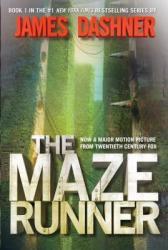
In recent years, the "Post-Apocalyptic" book genre has taken the world by
storm- filling book shelves and enthralling readers all around the globe. But with the rising popularity of this market, an influx of new books have followed, and as such, it has become harder and harder for readers to find good post-apocalyptic novels. For the case of "The Maze Runner", one of the most popular novels in the genre, James Dashner has managed to exceed the status quo and produce a tremendous read.
The story is set in a distant future, where a group of teens are mysteriously teleported into a giant, stone maze. Not only has their memory been cleared, but they also have no indication as to why they have ended up in this position and what means they must take to escape.
Their situation complicates even further, given that the maze doors close every evening. During the night, vicious monsters roam free and devour any humans in their way. The teens, who have declared themselves “Grovers”, attempt to map the maze, but doing so poses obvious threats to their safety.
Enter Thomas, a new “Grover” arriving in the maze. As he learns his way about this new reality, the story follows his point of view in first person perspective. Thomas eventually comes to terms with living as a Grover, but one night, as he crosses into the outer layer of the maze, his world is turned inside out.
Over time, Thomas must confront these imminent struggles, while also attempting to solve the grand puzzle of the maze. Readers are kept on edge through the entire novel, with hidden twists and turns on every turn of the chapter.
I would certainly recommend this read for teens and adults alike. While it’s true that the novel is aimed at a young demographic, its plot is engaging for even some of the most mature readers. The ending simply cannot be predicted, leaving readers to make their own speculations about the mysterious origins of the maze.
One complaint I might file is that there is somewhat of a lack of character development. The plot is so action-packed that it would see Dashner decided to leave out some of the more subtle nuances of a good novel.
If you decide to not read this novel, I would suggest as an alternative “The Lord of the Flies” by William Golding. The plot bears some parallels to that of the Maze Runner, but makes up for a majority of its imperfections.
Overall, “The Maze Runner” stands to be a top-quality post-apocalyptic teen-novel, making for an engaging read. The story sheds light on the natural instincts of teens under true isolation. In doing so, it echoes a number of themes which leave readers to draw meaningful questions about life, nature, and the purpose of humanity.
Reviewers Grade: 10
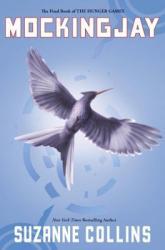
How might you survive in a post-apocalyptic world, wherein innocent citizens are pooled off to fight to the death in a violent, reality TV show? The "Hunger Games" trilogy, by Suzanne Collins, raises this question to readers, and through the course of the first two novels, Collins expands readers'
scope on morality and raises meaningful questions about modern society.
"Mockingjay", the last installment to the trilogy, takes this series to new depths, continuing the enthralling tale of Panem.
"Catching Fire", the book's prequel, left off with Katniss escaping the Quarter Quell arena, alongside most of her fellow tributes. While she was able to return safely, Peter and another tribute were taken captive by the Capitol. At this point in the narrative, a full fledged rebellion had begun to take route, and at its helm, is President Coin, from District 13.
District 13 was initially thought of as being in ruins, but secretly, the society still operates underground. Haymitch, along with political figures in District 13, work beside Katniss to inspire the other districts to join in their fight. As the rebellion rages on, Katniss serves her role as a figurehead, while in truth, she would prefer to join the fight head-on.
The battles soon draw nearer to Panem, and as they do, Katniss begins to question the true intent of this new regime. Ultimately, she makes a decision, tearing ties with some of her closest allies and pushing the narrative to new heights.
I began reading this installment to the series immediately after the last, and can say that I'm pleasantly surprised with it. One of the main reasons why I enjoyed the other novels so dearly, was because of the presence of powerful and thought-provoking themes. Under that regard, this novel certainly exceeds expectations.
One complaint I might file is that while the plot is outstanding, Katniss' character development may seem a bit underwhelming. I felt that her story arc never reached its true finish, and for this reason, the book left me a bit unsatisfied. Other than that, there are really only minor imperfections, some of which, you may not even take issue with.
Overall, I would pin my recommendation on this novel. While it was lacking in certain areas, Collins continues to engage readers with a novel that I honestly consider to be timeless. The powerful themes echoed through her writing have truly led me to draw meaningful thoughts about my life, reality, and shifting morals in the 21st century.
Reviewer's Grade Level: 10
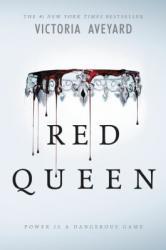
In the book Red Queen we first meet the main character, Mare. Who lives in a small town nicknamed,The Stilts with her best friend Kilorn. There is a war going on so Mare is frighten because she will drafted. Why?
Strangely because her blood is red; in this world there are two types of people Slivers (with sliver blood) and reds (with red blood). Sliver's have what is well described as supernatural powers, oh and they hate reds. So when Mare finds out that Kilorn lost his job and has to be drafted as well, she runs away to a tavern where she meets someone very interesting; who gets her a job working for the sliver king while there she discovers something very strange about herself. She catches the attention of the king and has to leave her family. What did she find out and will her life change for better or worse? Read Red Queen to find out. Grade: A+
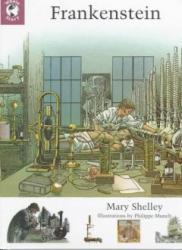
Frankenstein was a disappointment to me. As per the Romantic period, this novel used lots of scenes in nature to explain the characters’ emotional states. I do not mind a few good cries in a storm, but this novel borders on incessant outdoor melodrama. I decided to disregard both the plot and the setting in a vain attempt to enjoy the novel. I would only focus on the characters. As this was written by a female author, I looked forward to the female characters, which were awful. One, Justine, is a servant and seems only to exist in order to die. Elizabeth, who also seems to share this quality, is regarded as an object to be owned in a creepy incestuous manner by her cousin; she is apparently superior and virtuous only because of her noble birth. So, I dismissed the female characters to focus on the males, none of which were believable. Victor, his friend Henry, and his monster all were overly emotional, and they inspired no sympathy from me. With no likable characters and emotions running everywhere, I would only read Frankenstein if required.
Reviewer Grade: 9
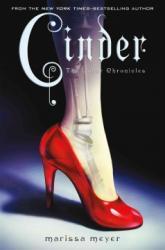
The idea of Cinder is nothing new; it is a retelling of a fairytale, Cinderella. I picked up this book expecting a rip-off of Ella Enchanted, but I got a very decent dystopian science fiction story instead. The titular Cinder character is easily the best part of this novel. She is clever, witty, and resourceful. I also enjoyed the new spins the author put on the classic fairytale. Instead of a glass slipper, Cinder wears a cybernetic metal foot.
Peony, one of Cinder’s stepsisters, goes out of her way to be kind to Cinder. The main antagonist reminded me more of the evil queen from Snow White than any Cinderella character, which was a bit of a disappointment.
Despite the fact that Cinder regularly ventures out of her home, none of the settings wowed me the way a dystopian story is supposed to. Additionally, the major plot twist is predictable from the second chapter, and by the time it is revealed, the reader has been banged over the head with so much foreshadowing that the moment loses its power.
Reviewer Grade: 9
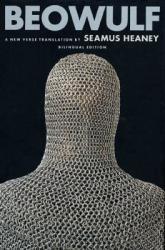
Beowulf is a classic heroic epic written one thousand years ago; I read the version that Seamus Heaney translated into modern English. This translation was excellent, managing to balance the original style and rhythm with a clear and understandable tone. Beowulf is a traditional hero. As a result, some of the plot points are fairly predictable. Nevertheless, I would recommend this epic poem to anyone who enjoys Tolkien or other fantasy series. Reading Beowulf, it is easy to see where more contemporary authors got their inspiration.
Reader Grade: 9

Flush, written by Carl Hiaasen was about a boy, named Noah. Noah has a father who is in jail for sinking a boat called the Coral Queen. His father has been put in jail before, and never regrets what he has done because he believes that he is responsible for his actions, and it is worth it for what he has done. Noah is used to his father doing crazy stuff like this, because when Noah's father sees something that upsets him, he will do whatever he can to stop it, especially with people hurting and damaging wildlife. The reason he got recently put in jail is because he claimed that he saw the boat putting all of their sewage into the ocean water. Even though his dad does lots of crazy and unpredictable things, Noah thinks his dad would never lie to him about what he saw. He starts to investigate and tries to prove that the Coral Queen did in fact put sewage into the ocean. This book did surprise me in some ways, and the book got more and more interesting as it went on.
Reviewer grade:
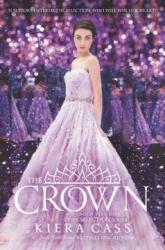
This is the last book in “The Selection” series. However it is just as good as the previous books. “The Crown” is part of a series and so reading the books in order will keep you from being very confused. There really isn't a cliffhanger in the book because it is the last in the series.
But the book is still unpredictable and grabs your attention. If you like romance stories read “The Crown”. It is beautifully written and is one of the best books I have read this year.
Reviewer Grade: 8

What I liked about The Secret of the fortune Wookie is that it is humorous and related to Star Wars! For those who like humor and Star Wars, you would love reading it. It is about a kid named Dwight and his friends.
Dwight makes an origami Yoda and it uses the "force". But Dwight gets suspended and his friends don't know what to do without him. Would he want to come back to school after his suspension is over? Is he still interested in origami Yoda anymore? Find out in The Secret of the Fortune Wookie!
Reviewer Grade 7
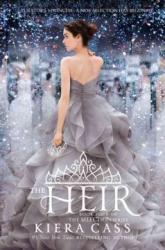
The fourth book in “The Selection” series starts a new “Selection”
with the new generation of royalty (don't worry the characters from the previous books are still in the story). Since “The Heir” is part of a series (all of the books) should be read in chronological order for better understanding of the stories. This is another amazing book in an overall amazing series. For any romance book lovers please read “The Heir” (I seriously beg you). Not at all predictable and with a cliffhanger or two this book will steal all your attention. Definitely on my top ten list of best books I have read this year!
Reviewer Grade: 8
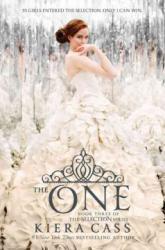
The third book of “The Selection” will keep you on your toes. This book may be the third book in a five book series however, it is the last book about Prince Maxon’s “Selection”. The entire book (until the end, of
course) you will be asking what happens next. If you enjoy romance books READ THIS BOOK!!! Since this book is apart of a series if you read the books in order it will make a lot more sense. This is a completely unpredictable book, you will never know what will happen on the next page. It was definitely one of the best books I have read EVER!
Reviewer Grade: 8





 Ruth Holley Library will be temporarily closed for approximately one week starting Mon., Dec. 2 to complete roof repairs.
Ruth Holley Library will be temporarily closed for approximately one week starting Mon., Dec. 2 to complete roof repairs.